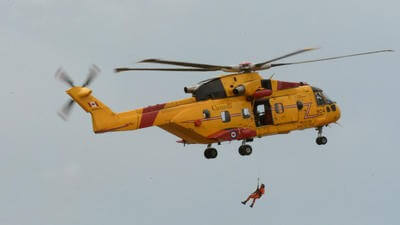Interview: Inovytec / Jacomedic share insights into the Ventway Sparrow Ventilator

Morten Ovsteng, Product Manager for Jacomedic, spoke to AirMed&Rescue about the company’s role in distributing the Inovytec Ventway Sparrow Ventilator in the Nordic region throughout the Covid-19 pandemic
What is Jacomedic, and how/where does the company operate?
Jacomedic is a Norwegian private-owned company. For more than 30 years, we have been a supplier of medical devices to the Norwegian market. Our special field has always been airways products related to acute medicine, intensive care and anesthesia.
Could you explain how Jacomedic and its partners work together?
Jacomedic’s main focus is to supply high quality and innovative products. We use our ISO9001 and ISO14001 quality systems to qualify our partners. We keep close contact with our partners and like to invite partners to Norway, both for them to better understand our market, but also to build strong personal and social relationship to our partners.
Inovytec is one of Jacomedic’s partners and has been very active over the past 12 months; Inovytec’s Ventway Sparrow has proved invaluable to many healthcare providers that weren’t using it before. What makes it different than other ventilators?
The Ventway ‘Mobile’ ventilator was conceived by the inventors Nir Barkai and Mark Shahar after witnessing countless incidents in which EMS teams struggled with cumbersome mechanical ventilators. From the start, weight and durability were classified as two of the most important features of the new design, and, once combined with high-performance ventilation, it was clear the two had a game-changer on their hands.
The Ventway’s unique properties and design mean caregivers can manage both pediatric and adult patients with ease. Equipped with a user-friendly interface and a miniature turbine that draws ambient air from its surroundings, the Ventway is not reliant on an external oxygen supply. Additional features such as a 4.5 hours battery life (rechargeable and non-rechargeable), continuous alternate electrical adapters and power supply support, and Airworthiness Release Certification of up to 25,000 ft, allow for smooth transitions from the point of injury to the Emergency Department or Intensive Care Unit (ICU) and anywhere in between, providing an unparallel continuum of ventilation in one compact design.
Before the pandemic showed up for the first time, Inovyetc was well established in the Norwegian market through a running contract to supply every air ambulance with the Ventway Sparrow. That meant the Ventway was already well-known product in Norway when the pandemic broke loose. Beside the high performance and compact design, the Ventway is also really easy and intuitive to operate, which helped us produce quick and effective training online when the country locked down.
The Ventway has been through multiple rigorous tests, in particular, due to the climate and weather conditions it must be capable of functioning in.
Covid-19 has increased the pace of innovation in the healthcare technology sphere; what other products has Inovytec developed and brought to market in the past 12 months that are changing the efficacy of patient treatment protocols?
Until now, we have only been working with the Ventway in Norway, while closely following the SALI – an advanced critical aid system with constant connectivity to dispatcher, and can see a great potential also for this device.

About the Ventway Sparrow Ventilator
Ultra-light, the Ventway Sparrow delivers high-performance ventilation to fit all patients, in both IV & NIV. Built for mobility and operated with ease via a user-friendly interface, the Ventway is the solution to administer quick and efficient ventilation, from emergency occurring in the field, into an intra-hospital transport (to/from ED, to surgery, recovery, imaging including MR compatibility).
Ventilators designed to perform during an outbreak of viral infection require a unique combination of features, all of which exist in Ventway:
1. Ease of operation: The Ventway is extremely simple to operate, any medical practitioner with a basic education in ventilation can operate it within minutes.
2. Oxygen-independent operation: The Ventway utilized a turbine to draw ambient air from its surroundings, therefore, the ventilation does not rely on oxygen supply and its oxygen consumption is low. This is a critical feature when facing a mass ventilation event, a condition in which patients will probably be ventilated in sites that are not necessarily equipped with unlimited oxygen supply. Additionally, the ventilator is ideal for extended site transfers.
3. Weight and size: The Ventway ~1 kg ultra portable ventilator is lighter and smaller than any corresponding ventilators in the world today. This allows it to be used for transferring patients in and between hospitals.
4. Long battery life: The Ventway has a battery that provides up to 4.5 hours of operation, a feature that significantly increases operation safety.
5. Advanced ventilation capabilities in a small package: The Ventway is able to provide most of the ventilation method techniques relevant to the majority of transported patients, including CPAP, SIMV volume and pressure control, PEEP between 0-20 cmh2o.

March 2021
Issue
In the March 2021 issue:
Flight Risk Assessment Tools – what are the software options for operators?
Hoist training – the choice of virtual reality, mixed reality, classroom and real-life
FOAMed – the pros and cons of open medical information exchanges
Mandy Langfield
Mandy Langfield is Director of Publishing for Voyageur Publishing & Events. She was Editor of AirMed&Rescue from December 2017 until April 2021. Her favourite helicopter is the Chinook, having grown up near an RAF training ground!


